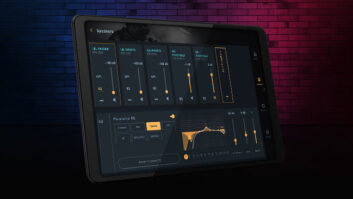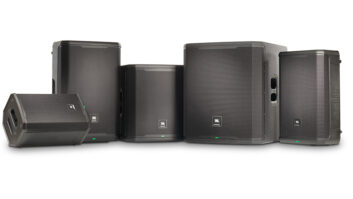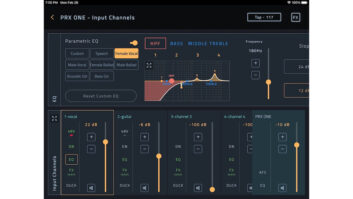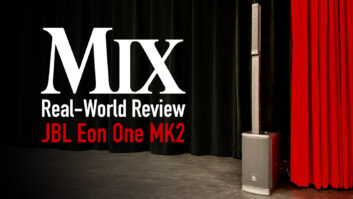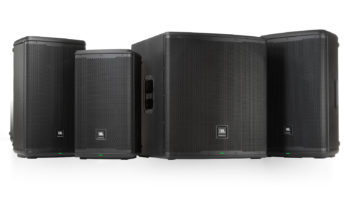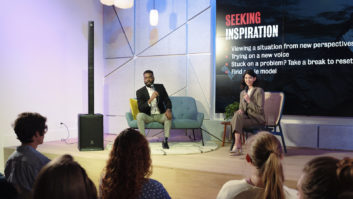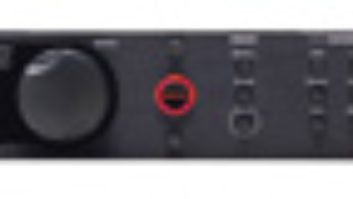
The DriveRack has become one of dbx’s most popular processors, leading to a series of rackmount processors. The DriveRack PA is a complete system processor that can replace a rack full of gear. It incorporates a variety of system processor functions for live sound system control, which include versatile crossovers, 28-band graphic EQ, feedback elimination, stereo multiband parametric EQ, output limiting, auto-EQ with 28-band RTA and a signal generator.
START ME UP
The DriveRack PA can be powered up in a program of your choice. To set the “Initial Program,” press and hold Program while turning the power on. The LCD will show the message “Use Wheel to Change Restart Program Number.” Use the data wheel to scroll through the various program presets until you find the one desired for start-up. Then press Program again, and DriveRack PA will always boot to that program.
SAFE AND SECURE
To keep snoopers with overactive fingers from making unwanted changes to system parameters, you can set a security lockout. Pressing and holding Wizard while powering up provides access to the security function. One of two possible messages will appear: “System unlocked; all user input will be accepted,” or “System locked; no user input will be accepted.” Turn the data wheel to select Lock, Unlock or Filter Unlocked. Pressing Prev Page will change the unit’s lock status. Pressing any other button exits the lockout function and the unit will start up in the normal manner. In some situations, you may want to leave the feedback filters unlocked so they can easily be cleared. In that case, follow the same procedure but use the data wheel to select “Feedback Filter Unlock.”
ROOM TWEAKING
When using the auto-EQ function, try different locations in the room for the measurement mic and (if possible) the loudspeakers. DriveRack PA can automatically shoot the room with pink noise, analyze the frequency characteristics of the speaker/room combination and then apply a compensating EQ curve. But DriveRack is unable to detect whether you’ve placed your mic (or speakers) in an area of the room where there is acoustic interference. Areas where sound-wave reflections meet and cancel each other out are called nodes. Room locations where sound waves meet and combine are called anti-node. And with poor room geometry, it’s possible for a particular low frequency to completely disappear at a node, creating a dead spot. A low frequency at an anti-node can be amplified by as much as 6 to 9dB higher than in other areas of the room, creating a hot spot.
The DriveRack PA’s auto-EQ function cannot identify nodes and anti-nodes, so to compensate it may try to boost or cut a frequency drastically. If you listen from the mic’s position and don’t hear a change in frequency response while manually adjusting a particular frequency band, then the mic is probably sitting in a node or anti-node. To get around this problem, move the mic (or speaker) position and try the auto-EQ process again.
If you notice that the auto-EQ function boosts or cuts several adjacent frequency bands, you may need to adjust the crossover output containing those bands. For example, auto-EQ is applying cuts at 315, 400, 630, 800, 1,000 and 1,250 Hz. This might mean the level of the midrange output from the crossover is too high. Pull it down by a few dB and re-shoot the room. You may find that auto-EQ applies less equalization, which can result in a better sound because you’ve reduced the amount of phase-shift created by the filters and lowered the noise floor.
TIME IS ON YOUR SIDE
DriveRack PA has an alignment delay on each crossover output, which is useful for several purposes. One is to compensate for drivers within a loudspeaker that are not time-aligned to each other. (This can happen when the woofer’s voice coil sits farther back in the cabinet than that of the HF horn.) Adding a small delay (say, a half-millisecond) to the horn can acoustically align it to the woofer output. Similarly, there are venues where full-range boxes may be flown above the stage while the subs are ground-stacked in front of the stage. At the listening position, the difference in arrival time from the sub can be different from that of the full-range box. Adding a bit of delay to the subs (try 1 ms per foot) can solve this problem.
Another use for the alignment delay is to delay the entire P.A. system to the backline. This is especially useful in smaller venues where a lot of stage sound spills into the audience. This spill will hit the listener after the sound from the P.A. system, which is usually located far downstage. Delaying the P.A. so that it hits the listener at the same time as the sound from the backline will result in a tighter mix due to decreased phase interference. Also, the overall bass response will be reinforced when the onstage bass rig is “in time” with the P.A. As a guide, delay the main outs of the DriveRack by 1 ms for every foot between the backline and the main speaker cabinets. This technique may not yield dramatic results on large outdoor stages.
In addition to being Mix’s sound reinforcement editor, Steve La Cerra is the front-of-house engineer for Blue Öyster Cult.
